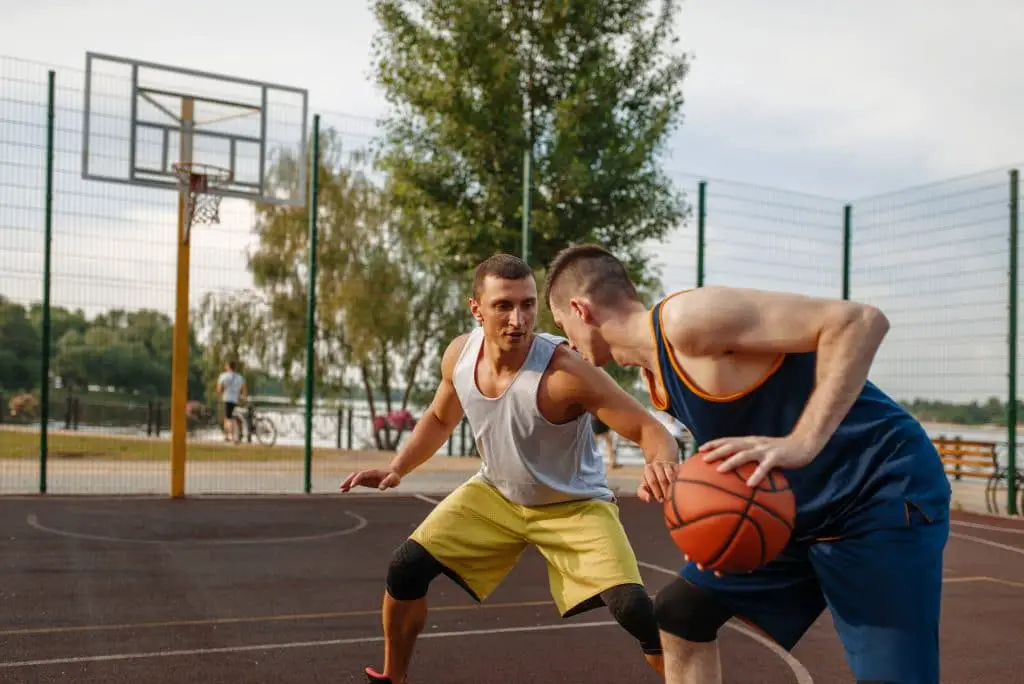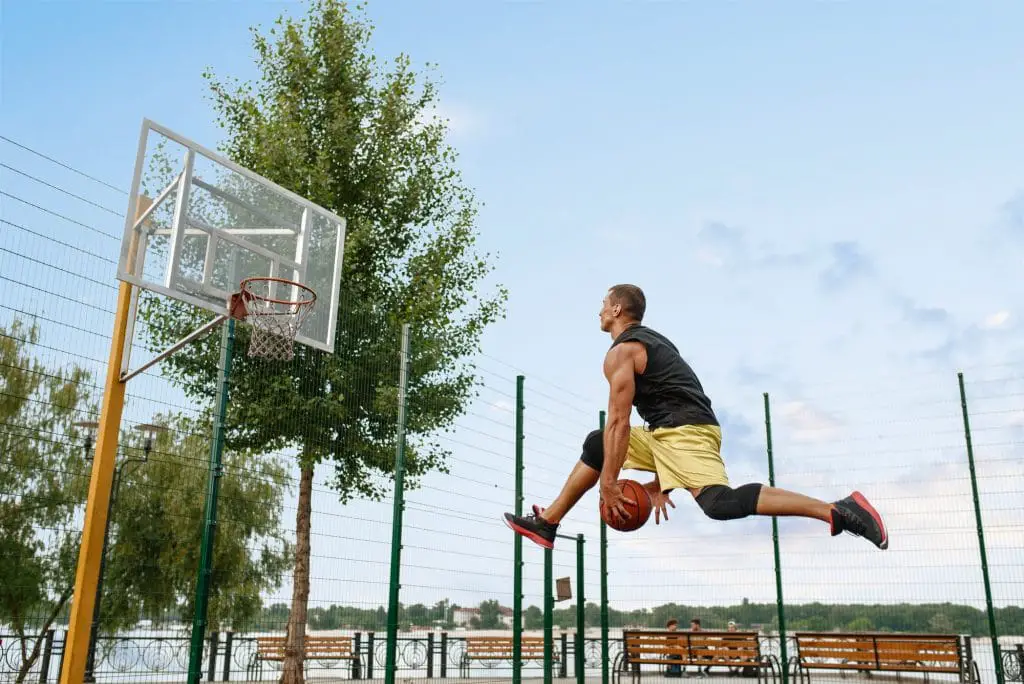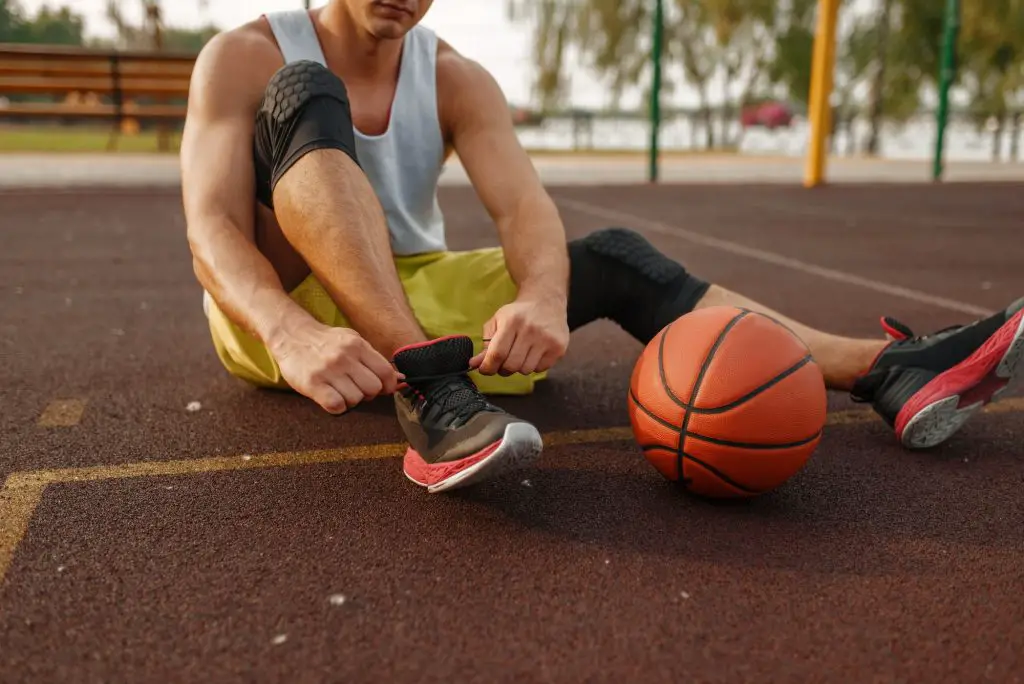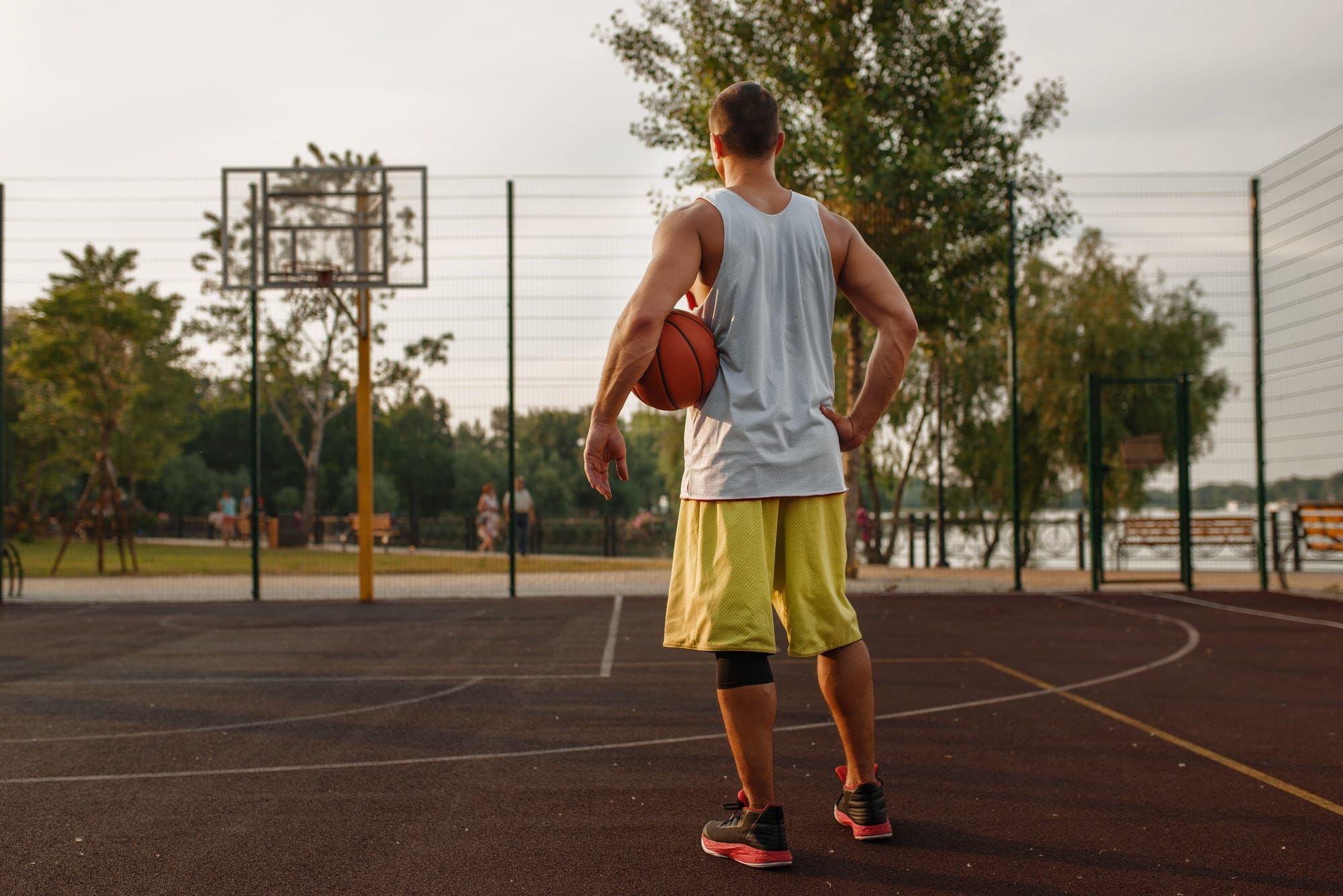Every basketball player understands the importance of a good pair of basketball shoes. But what some might not know is that playing basketball outdoor puts very different demands on your shoes when compared to playing indoor basketball.
Playing outdoor basketball very often means playing on a slippery and decrepit old court covered in dust, debris, gravel, and dirt. That is a far cry from playing on a pristine hardwood indoor basketball court with a smooth surface and a good grip.
Good basketball shoes for outdoors are durable and have good sole material, traction, cushioning, ventilation, and durability. For outdoor play, you need a pair of shoes that are tough and can prevent you from slipping on the court and spraining your ankles.
Besides Air Jordans (the BEST overall), these are our recommended best basketball shoes for outdoors:
- Best Outdoor Basketball Shoes for Guards: adidas Men’s Harden Vol. 4 | Read Review
- Best Outdoor Basketball Shoes for Forwards: Nike Lebron 17 | Read Review
- Best Outdoor Basketball Shoes for Centers: Nike Lebron Soldier XIII SFG | Read Review
The problem that outdoor basketball players are facing is that sneaker manufacturers do not design basketball shoes specifically for outdoor play. Since there are no dedicated outdoor basketball shoes, it is up to you the shoe buyer to sift through the models on the market and find something that can stand up to the demand of outdoor games. That sounds like a lot of work. Which is why we have done all the hard work of research for you.
In the rest of this article, we will compare the differences between indoor and outdoor basketball and explain why the requirements for outdoor basketball shoes are different from that of indoor shoes. Then we will briefly talk about how your position and style of play will affect your choice for basketball shoes. After that, we will go over in detail the 5 main criteria with which you need to evaluate basketball shoes for outdoor play.
Related: Top 25 Best Basketball Shoes for Guards | Forwards | Centers
Basketball Positions and Shoe Types
Before we go into the detail of the requirements of outdoor basketball shoes, I want to briefly talk about how your style and position of play will affect your choice of basketball shoes:
- Point Guards: Point guards rely on quickness, agility, and explosiveness. You want shoes that are unconstraining and lightweight. Low-tops fit this requirement. The price you pay is a lack of ankle support.
- Wings: Wings need to be quick and agile like point guards, which calls for lightweight, unconstraining shoes. But sometimes they also need to be able to tough it out down low, which requires sturdier, heavier shoes with more support and stability. Mid-tops offer a happy compromise between these two contrasting requirements.
- Low Post Players: Low post players spend their time fighting and banging down low. They need protection, stability, and support for their physical style of play. High-tops offer the best protection and support for them. The downside is that high-tops tend to be much heavier.
Basketball shoes can get worn out quickly if you regularly do your agility trainings outdoors. It is recommended to get a pair of cross training shoes for footwork and agility trainings.
Related: What are Cross Training Shoes? Types | Difference | Usage
The Difference Between Indoor and Outdoor Basketball

Anyone who has played basketball on both indoor and outdoor courts knows instinctively that there is a big difference between the two.
Indoor courts are nicer. Much nicer. The flooring of indoor courts is typically made of hardwood. It is clean, smooth, offers a good grip, and is gentle on your shoes. Indoor courts also tend to be air-conditioned. You shoes are shielded from the harsh elements outside.
Outdoor courts, on the other hand, are typically much rougher. You could be playing on a cracked concrete floor strewn with debris. Then there are the puddles you have to navigate after rain. And the dirt everywhere. There is no air conditioning. You are under direct, intense sunlight. Outdoor basketball is just much more punishing and demanding on your shoes.
Shoe Sole Material for Outdoor Basketball

As we have mentioned, outdoor basketball courts are typically much rougher on your shoes. The hard surface, the cracks, the debris, and the dirt can all conspire to wear out the soles of your basketball shoes in no time. So what you need is a sole that can withstand all the punishments an outdoor court can throw at it. Look for shoes with soles that are thick and made of hard rubber – they have the best chance of surviving tough outdoor environments.
Many people do not like a thick and hard sole because it takes away their court feel. That is a fair point. But in the case of outdoor basketball, I think giving up court feel is a reasonable trade-off to make. In return, you will get a pair of shoes that will last you much longer.
Shoe Traction for Outdoor Basketball
Outdoor courts tend to be not well maintained. Often, they are covered with gravel or dirt. This makes them quite slippery. Playing on them increases your risk of slipping and sliding. Step on a gravel and you could fall face-first onto the ground or sprain your ankle. This is very different from an indoor game where you are playing on a well-maintained hardwood floor with a good grip.
What you need from your outdoor basketball shoe is traction, which depends on 2 things: sole material and tread pattern. For sole material, hard rubber is a very good choice that offers excellent grip on even slippery surfaces. For tread pattern, look for deep and extensive grooves on the sole that cover the entire surface of the sole.
If you are a point guard or a wing, traction is even more critical for you. With all the cutting, stopping, and jumping that your position of play requires, you could easily slip and injure yourself on a poorly maintained outdoor court. As such, traction should be your number 1 criterion for choosing an outdoor basketball shoe.
Shoe Cushioning for Outdoor Basketball
Outdoor courts are not only hard on your shoes, but they are also hard on your feet. An outdoor concrete floor is much harder than an indoor hardwood floor. Jumping and running on concrete can put a lot of stress on your feet and ankles. All those potholes and debris on an outdoor court can also really put a dent on your feet.
To protect your feet, outdoor basketball calls for a lot more cushioning than indoor play. You need shoes with thick midsoles and a maximum amount of cushioning. Some shoes only offer cushioning at the heel and/or ball area. What you want is full-length cushioning for the entire foot.
Each shoe company has its own proprietary technology for cushioning. For Nike, it is the airbag-like Zoom Air or Max Air. For ASICS, it is the elastomer ASICS GEL. For Adidas, it is a cushioning foam based on a combination of EVA (Ethyl Vinyl Acetate) and TPU (thermoplastic polyurethane). They can all do a good job in protecting your feet against concrete and gravel.
Shoe Ventilation for Outdoor Basketball
You do not get air conditioning on an outdoor court. You play directly under the sun. It could get very, very hot. Not only will it get uncomfortable, but it can also get dangerous. If your sweat gets trapped inside your shoes, your feet could start sliding within your shoes and you could lose your grip and sprain your ankles. This is why ventilation is very important for outdoor basketball shoes.
Look for shoes with ventilation holes or air vents on their uppers. Uppers that are made of mesh is even better. They let your foot sweat evaporates, keep your feet cool and dry, and make sure your feet will not be sliding inside your shoes.
Shoe Durability for Outdoor Basketball

Outdoor basketball puts a heavy demand on the durability of basketball shoes. The extreme range of temperatures of outdoor courts could weaken the best shoe materials. The wear and tear inflicted by concrete floors, debris, gravel, and potholes could prove challenging for even the most well constructed shoes. To last long in such a demanding environment, outdoor basketball shoes need to prioritize durability over other aspects such as stylishness.
Durability depends on two things: materials and construction. In our experience, shoe uppers made from synthetic materials such as polyester or composite materials are better at this durability game than those made of natural materials such as leather or canvas. For construction, your best bet is to pore through online reviews and talk to other basketball players. But in general, basketball shoes from most of the major athletic brands are usually pretty well-constructed.

Austin is the author of loveatfirstfit.com and a personal trainer with extensive knowledge in nutrition. Austin is passionate about helping others to find a suitable healthy lifestyle and feel good about themselves. Austin’s goal is to help people push their limits and achieve their physical performance.

